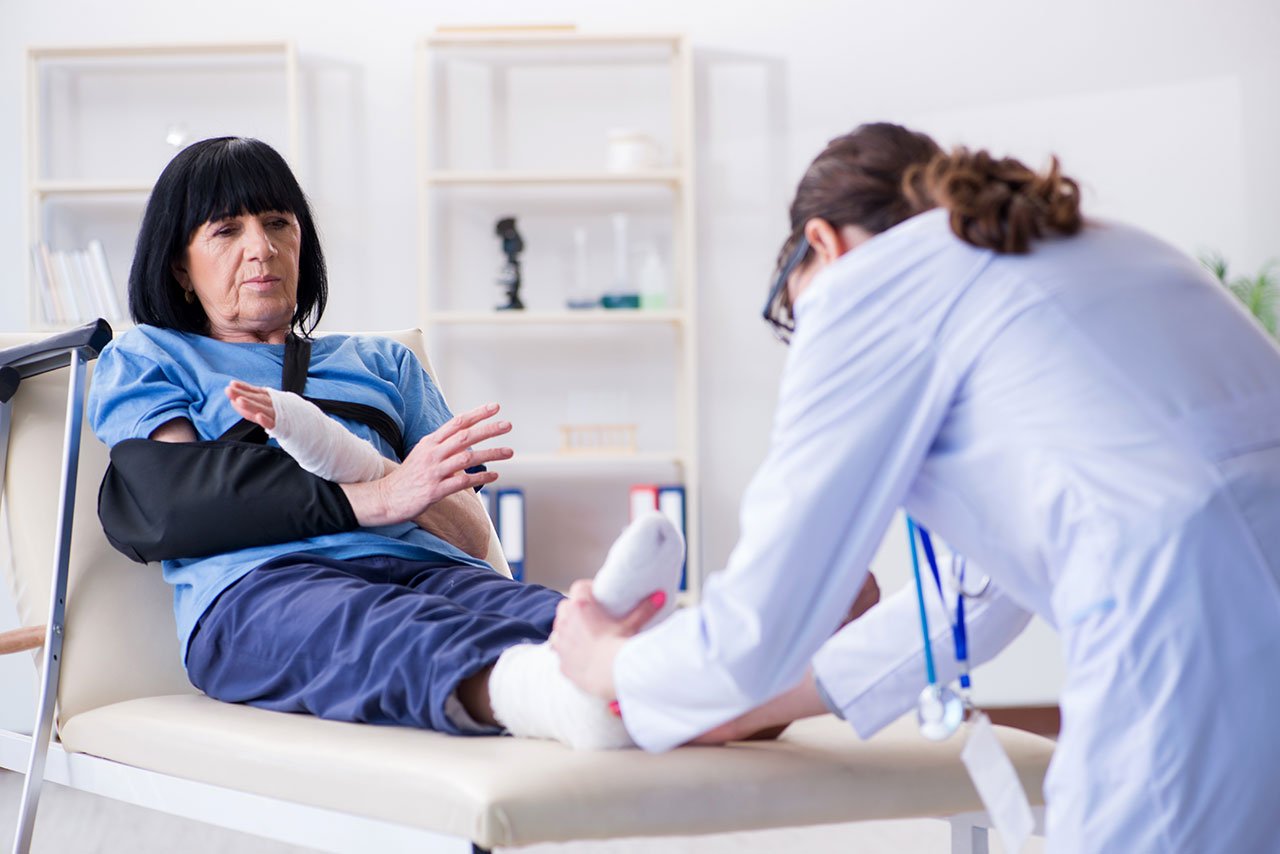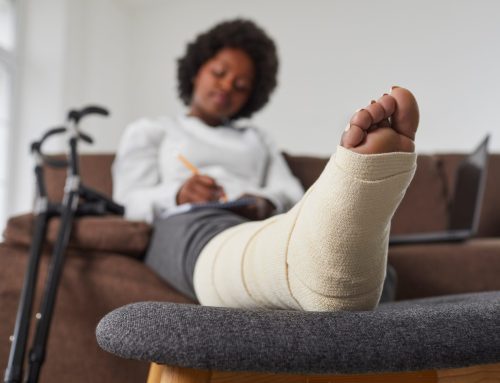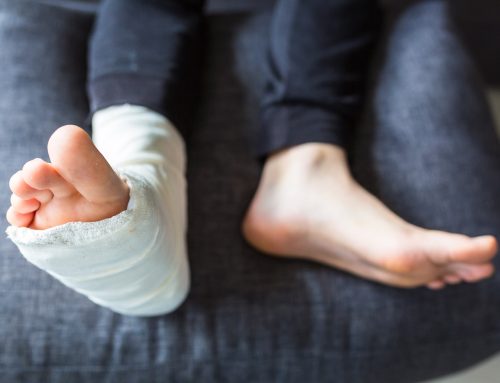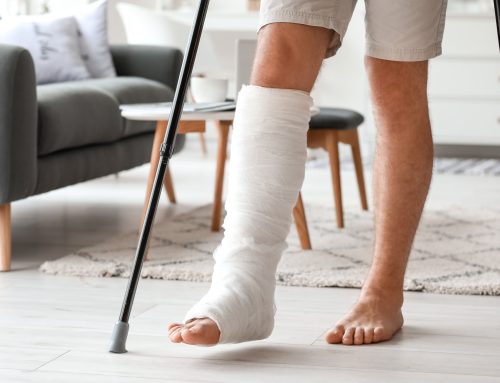You are with a group of people enjoying an afternoon of hiking. Suddenly, someone in your group trips and falls. They are in a lot of pain and looking to you for help—no one plans for their day to include treatment of a broken bone. But now, you find yourself in a situation where you need to do just that. This can be a daunting task, especially without professional know-how and experience. If you’ve found yourself needing to care for someone who just suffered a traumatic injury, what do you do?

First Aid for a Broken Bone
A broken bone is not always an obvious result of an injury. Other than a bone breaking through the skin and making a gruesome appearance, what other signs would there be? This is important to know, as not all fractures result in a bone protruding out of the injury site.
Sharp stabbing pain in the area of the injury that worsens with movement, discolouration, swelling and/or other visible deformations are all signs that a bone could be broken. It’s safe to treat the injury like a broken bone and handle it with care until you can see a doctor.
Open Wound Care
After you’ve called 911, you’ll need to assess if there is any bleeding at the injury site. If there is, you’ll need to focus on stopping the blood flow by applying pressure to the wound. If there is exposed bone, do not attempt to push the bone back in place and avoid touching the exposed bone.
If you cannot apply pressure to the open wound due to a bone protrusion, place pressure around the wound to try and stop the bleeding. Removing any clothing around the injury is also recommended, but doing so carefully. The last thing you want to do is cause more harm. If you can, you may gently clean the wound to remove dirt or debris until an ambulance arrives, or you can get first aid.
Once the bleeding has stopped, use a sterile cloth or bandage to cover the wound. Maintaining pressure on the wounded area is crucial to prevent more bleeding and to keep the dressing over the wound. Remember that you don’t want to make the bandages too tight to promote circulation. A good method is to try to leave enough space for your finger to be able to fit under the wrapping.
Stabilizing the Fracture
A fracture is a traumatic experience, and if you’re helping someone until a trained professional arrives, you’ll need to keep them as still as possible. If the injured area is in their neck or back, do not roll them over or reposition them in any way if it can be helped. Moving someone in this condition can cause permanent paralysis or other complications.
It is imperative that the fractured bone not be moved. You can use a splint to stabilize the injured area if you have available resources. A splint is used to hold the broken bone still, prevent further injury to the site, and reduce pain.
It is essential that the splint be rigid to support the injury as well as padded to help with stabilization. It also should not be too tightly affixed to prevent circulation. A strong stick or branch can be used, or other sturdy material, such as rolled-up newspaper or cardboard.
After the splint and bandages are attached, check every 15 minutes for circulation issues, such as extremities turning blue or if the patient feels tingling in their fingers or toes.
Comfort and Prevention of Further Injury
Once the above steps are taken, try to make the injured person as comfortable as possible. If available, use an ice pack or cold compress to help reduce swelling. If you are using an ice pack, do not apply the ice directly to the skin. Wrap it in the material first and then apply it in 10-minute intervals. (10-minutes on, 10-minutes off). Keep the injured area elevated if you can.
To help subside the pain and inflammation when dealing with a broken bone, ibuprofen, acetaminophen, or naproxen can help.
Until medical help arrives, it’s crucial that you look out for signs of shock. Short rapid breathing, faintness or feeling cold are all symptoms to look out for. Unless you must move due to safety concerns, staying put is recommended. It’s important to keep weight off the injured area until assessed by a doctor.
The key here is to get medical help as soon as possible. Treatment of a broken bone is something that should only be handled by a professional. Attempting to set the bone or move the injured party can easily cause further complications and injury.
Recovering from a broken bone can be frustrating. You want to get back to your lifestyle as soon as possible, which can be hard when you need to focus on healing. You don’t have to settle for traditional methods that will keep you waiting – LIPUS devices are here to help. They heal fresh fractures 38% faster on average with their convenient, at-home ultra-sound treatment. Contact us to find out if it’s a good fit for your treatment plan.
A broken bone can be a scary experience. Have you ever gone through this? Was someone there to help you? What was your healing process? Please share your story in the comments below for our readers that are curious about the next steps.





